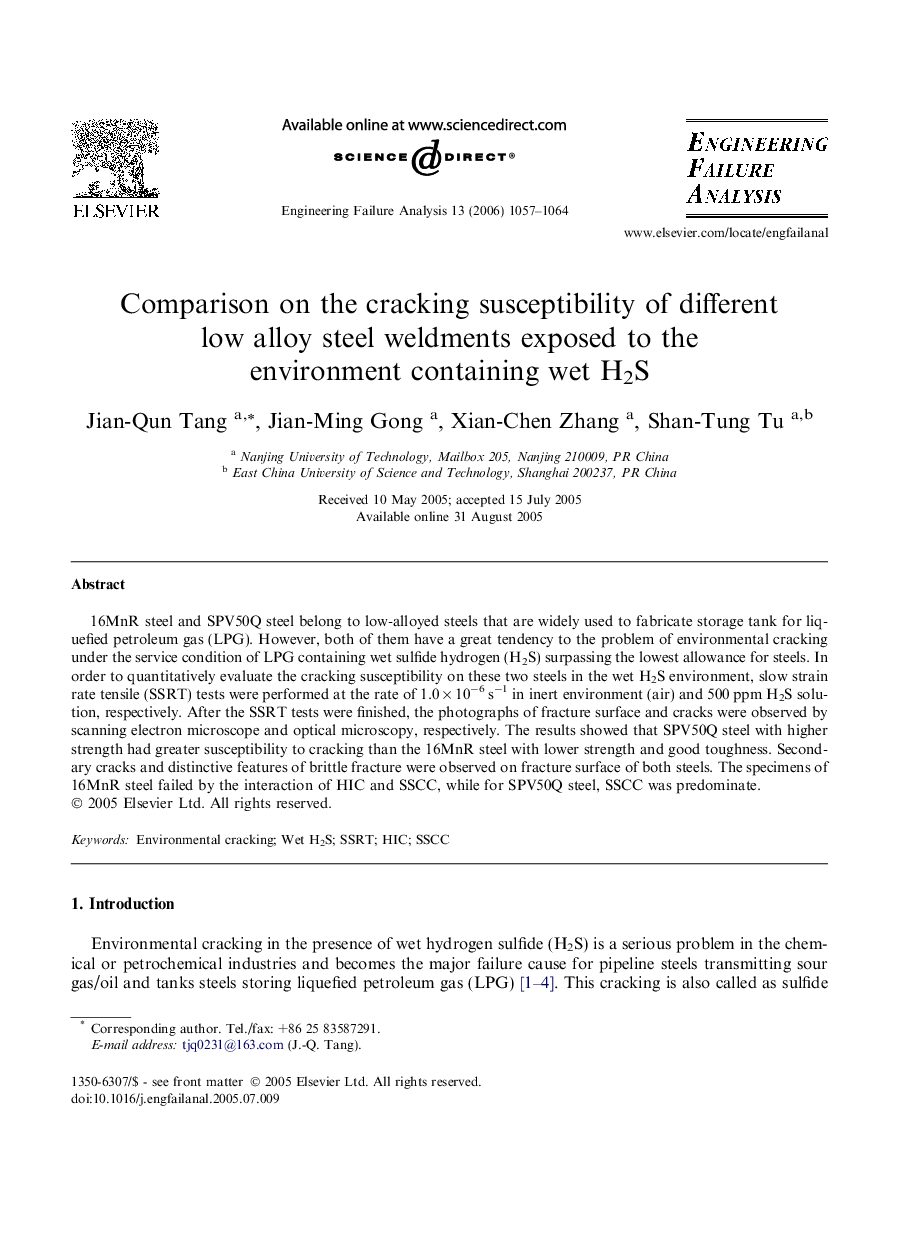| Article ID | Journal | Published Year | Pages | File Type |
|---|---|---|---|---|
| 769265 | Engineering Failure Analysis | 2006 | 8 Pages |
16MnR steel and SPV50Q steel belong to low-alloyed steels that are widely used to fabricate storage tank for liquefied petroleum gas (LPG). However, both of them have a great tendency to the problem of environmental cracking under the service condition of LPG containing wet sulfide hydrogen (H2S) surpassing the lowest allowance for steels. In order to quantitatively evaluate the cracking susceptibility on these two steels in the wet H2S environment, slow strain rate tensile (SSRT) tests were performed at the rate of 1.0 × 10−6 s−1 in inert environment (air) and 500 ppm H2S solution, respectively. After the SSRT tests were finished, the photographs of fracture surface and cracks were observed by scanning electron microscope and optical microscopy, respectively. The results showed that SPV50Q steel with higher strength had greater susceptibility to cracking than the 16MnR steel with lower strength and good toughness. Secondary cracks and distinctive features of brittle fracture were observed on fracture surface of both steels. The specimens of 16MnR steel failed by the interaction of HIC and SSCC, while for SPV50Q steel, SSCC was predominate.
